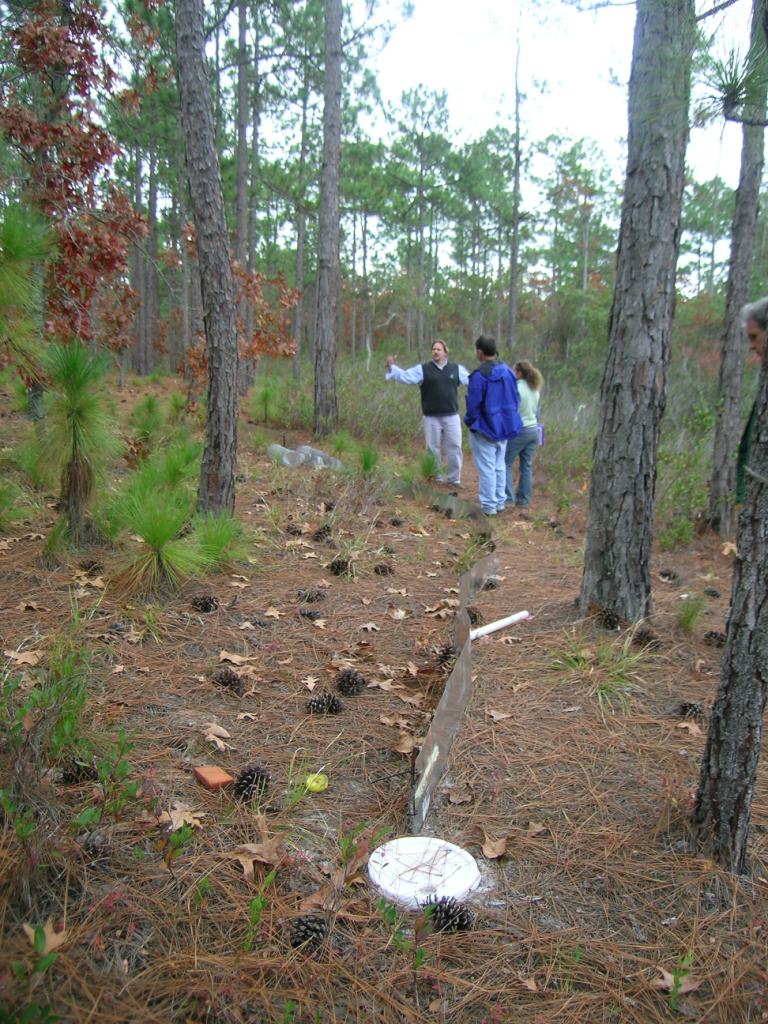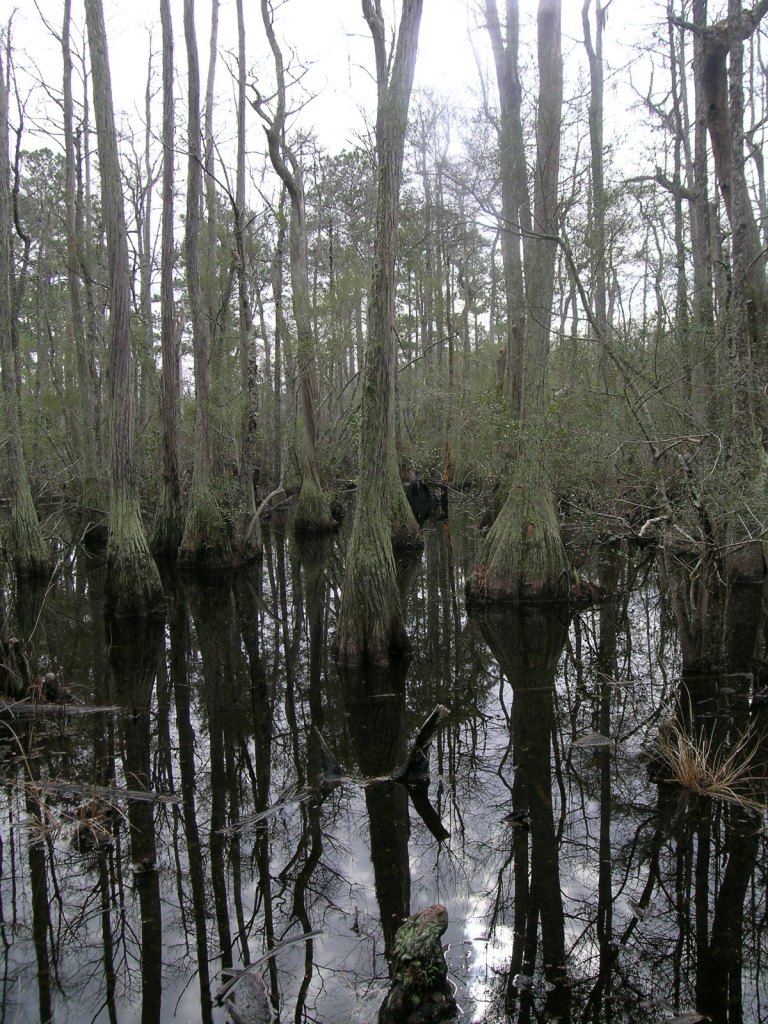
Burned longleaf pine savannah on Sandy Island with red cockaded woodpecker cavity tree in center.
Longleaf pine forests in the southeastern US depend on frequent fires to maintain themselves. This fact combined with a long history of unsustainable use by humans (see Lawrence Earley's great book, Looking for Longleaf...) has led to a massive decline of area composed of this ecosystem. In addition, endangered red cockaded woodpeckers (RCWs) use older longleaf pines for nesting, which has led ecosystem managers to use prescribed fire to help maintain RCW habitat. The Nature Conservancy (TNC) uses prescribed burning to manage longleaf pine forests for the RCWs on Sandy Island, a nature preserve near CCU. With funding by TNC, Department of Biology faculty (Kevin Godwin, Jim Luken, and John Hutchens) and CMWS graduate students (Kirstin Burbon, Ryan Reed, and Laura Schapell) have been investigating how fire management influences other community members such as herpetofauna (amphibians and reptiles) and upland and wetland flora. In addition, CMWS graduate student Alan Wood is investigating how fire history, plant assemblage, and wetland size influences the invertebrate 'seed' bank in wetland depressions on Sandy Island.
 |
 |
| Drift fence between upland and wetland on Sandy Island. | Cypress wetland on Sandy Island. |